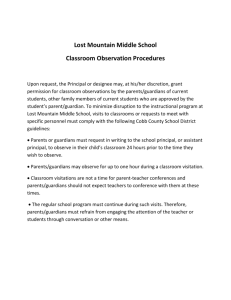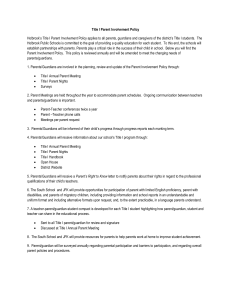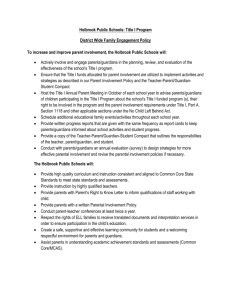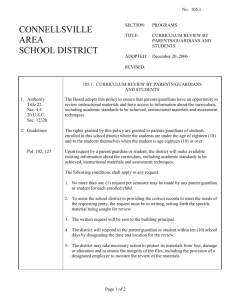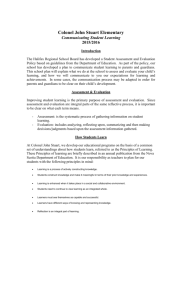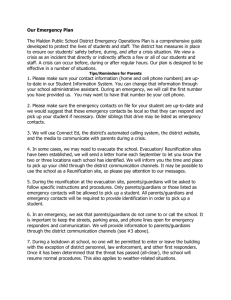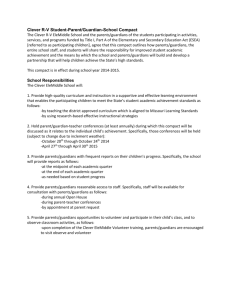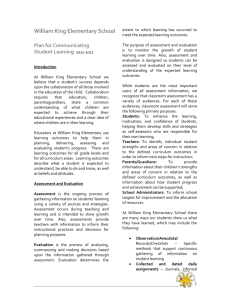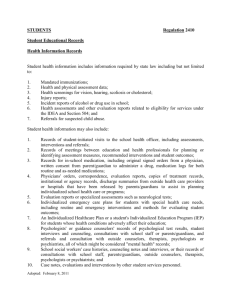(iv) Emotional Security
advertisement
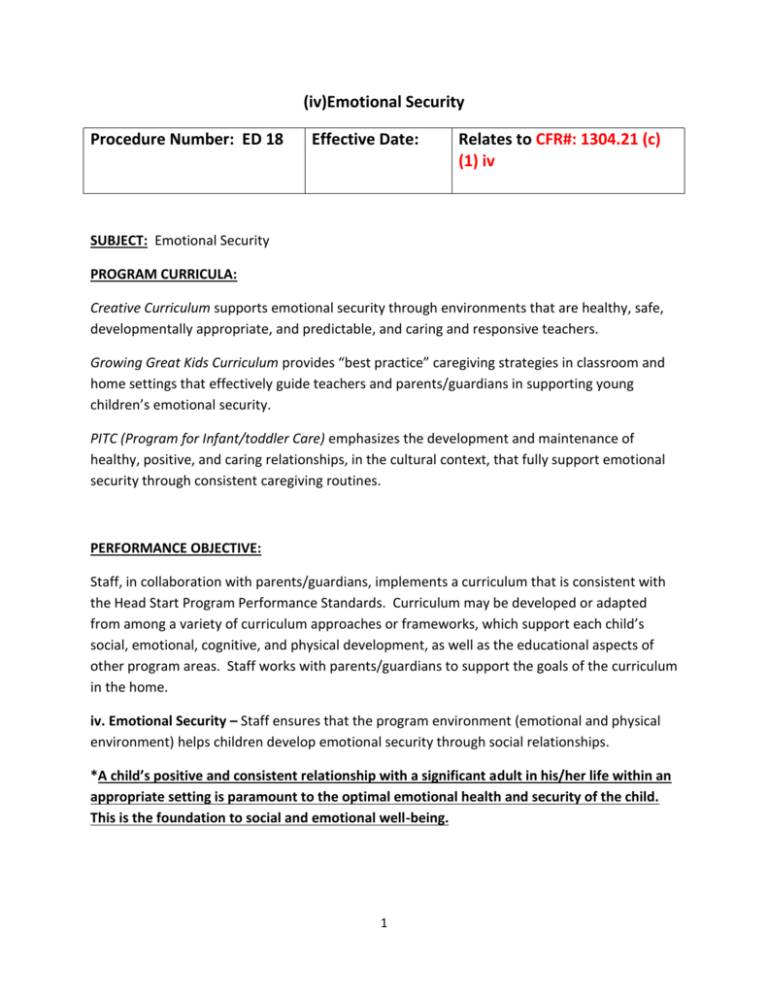
(iv)Emotional Security Procedure Number: ED 18 Effective Date: Relates to CFR#: 1304.21 (c) (1) iv SUBJECT: Emotional Security PROGRAM CURRICULA: Creative Curriculum supports emotional security through environments that are healthy, safe, developmentally appropriate, and predictable, and caring and responsive teachers. Growing Great Kids Curriculum provides “best practice” caregiving strategies in classroom and home settings that effectively guide teachers and parents/guardians in supporting young children’s emotional security. PITC (Program for Infant/toddler Care) emphasizes the development and maintenance of healthy, positive, and caring relationships, in the cultural context, that fully support emotional security through consistent caregiving routines. PERFORMANCE OBJECTIVE: Staff, in collaboration with parents/guardians, implements a curriculum that is consistent with the Head Start Program Performance Standards. Curriculum may be developed or adapted from among a variety of curriculum approaches or frameworks, which support each child’s social, emotional, cognitive, and physical development, as well as the educational aspects of other program areas. Staff works with parents/guardians to support the goals of the curriculum in the home. iv. Emotional Security – Staff ensures that the program environment (emotional and physical environment) helps children develop emotional security through social relationships. *A child’s positive and consistent relationship with a significant adult in his/her life within an appropriate setting is paramount to the optimal emotional health and security of the child. This is the foundation to social and emotional well-being. 1 OPERATIONAL PROCEDURES: Preschool Adults (Teachers, parents/guardians, Home Visitors) enhance emotional security in children when they provide an environment of respect and acceptance for each child. An environment of respect and acceptance is provided by adults who: A. Ensure that health and safety remain the number one priority in and out of the home B. Demonstrate through actions a genuine respect for each child’s family, culture, and lifestyle C. Provide an emotional and physical environment that reflects the culture of each child D. Foster the child’s primary language, while supporting the continued development of English E. Demonstrate respect for a child’s feelings (Growing Great Kids “Empathy Care-giving”), interests, and ideas F. Recognize and nurture the child’s friendships with peers G. Model effective communication by demonstrating respect and consideration through appropriate words and actions H. Facilitate conflict resolution in order to promote pro-social feelings and behaviors and to help each child demonstrate appreciation of others I. Design activities that support interactive and social-dramatic play J. Offer a variety of appropriate materials and equipment for all children including those with special needs K. Equip the environment with multiple sets of materials in order to reduce conflicts L. Encourage children to resolve their own conflicts with adult support, when necessary M. Help individual children manage stressful situations and events N. Display photos of children and their families and other familiar children at children’s eye level O. Plan activities that promote self-awareness and emotional security P. Post daily schedules at children’s eye level, adding pictures that correspond to each activity Q. Provide positive reinforcement for each child’s efforts R. Give each child opportunities to be independent and do things for herself as is appropriate S. Encourage each child to keep trying the task at hand T. Provide a soft, quiet area in the classroom for children to be by themselves as they need during the day U. Provide individual space for each child’s belongings 2 V. Provide consistent and predictable routines for each child based on their individual needs Infant/toddlers Adults (Teachers, parents/guardians, Home Visitors) enhance emotional security in infants and toddlers when they: A. Ensure that health and safety remain the number one priority in and out of the home B. Demonstrate through actions a genuine respect for each child’s family, culture, and lifestyle C. Provide an emotional and physical environment that reflects the culture of each child – create a “harmony” between the program and the home culture D. Foster the child’s primary language, while supporting the continued development of English E. Demonstrate respect for a child’s feelings (Growing Great Kids “Empathy Care-giving”), interests, and ideas F. Center-based Programs: Provide primary care giving that mirrors what the parent/guardians do in the home G. Develop a mutual understanding of the developmental stages and where each child is at on the developmental continuum H. Set up a physical environment that is responsive to each child’s individual developmental level, needs, and interests I. Offer a variety of activities and opportunities with full support and guidance J. Ensure that primary care giving is happening in a loving, positive, and consistent manner K. Provide consistent and predictable routines for each child based on their individual needs L. Provide positive reinforcement for each child’s efforts M. Give each child opportunities to be independent and do things for herself as is appropriate N. Provide a soft, quiet area in the environment for children to be by themselves as they need during the day O. Avoid overstimulation through others and the environment P. Equip the environment with multiple sets of materials in order to reduce conflicts Drafted 08-07-2012 Edited 08-20-2012 08-27-2012 09-17-2013 10-05-2013 3 4
